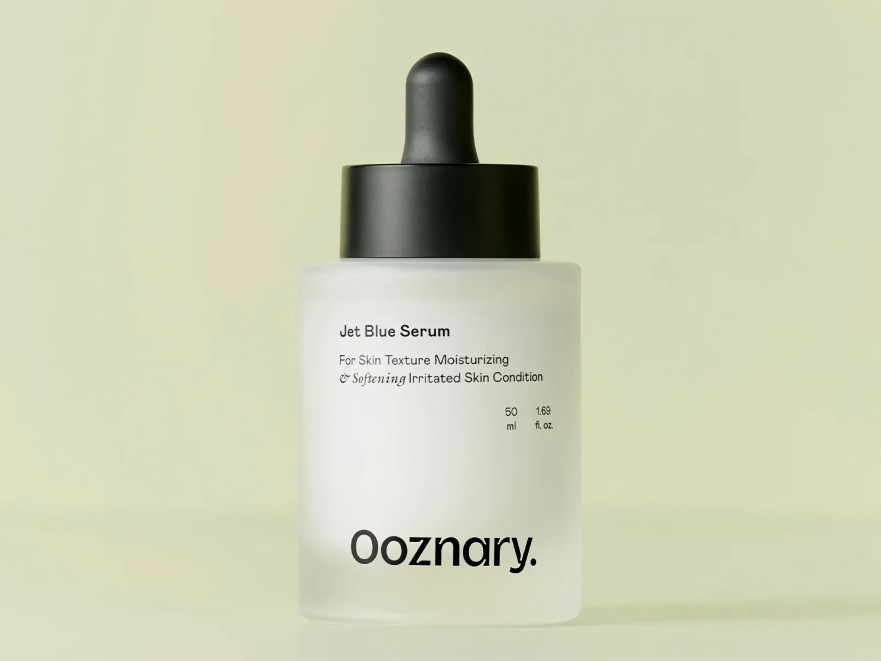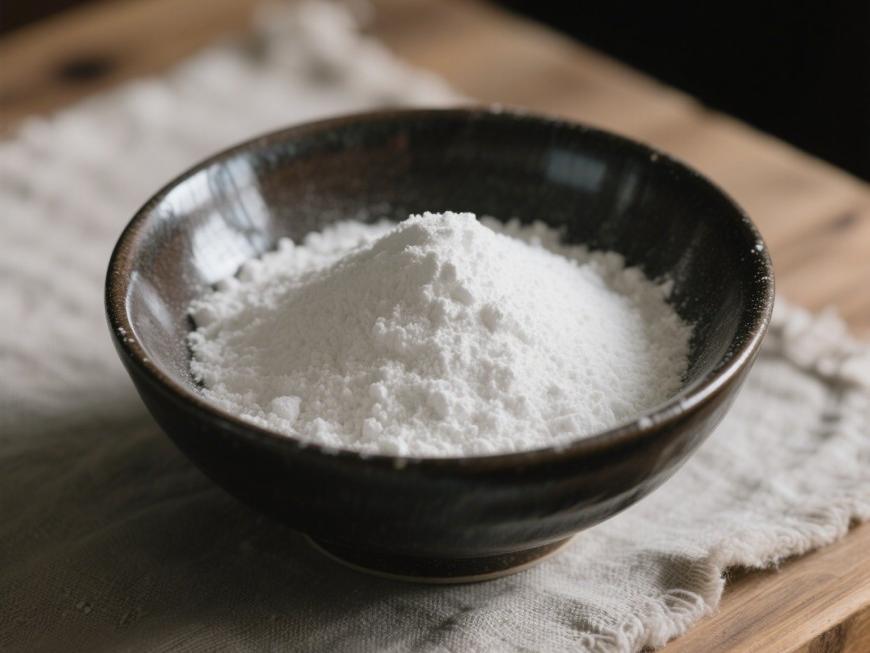D Mannose Powder Provides Innovative Ingredients for Functional Food and Beverage
D-mannose is a functional monosaccharide naturally found in fruits such as peaches and apples, characterised by its low-calorie content and mild sweetness다. It has become an important functional ingredient across multiple industries, including food and beverages, dietary supplements, animal nutrition, and cosmetics. 로a leading supplier of plant extracts, Green Spring Technology consistently provides customers with high-quality D-mannose ingredients in various specifications, supporting the development of innovative health products.
The main applications of this raw material include:
·Food and beverage industry: As a natural sweetener, it is widely used in health supplements, nutritional beverages, and other products;
· Animal nutrition industry: Used in feed formulations to support modern healthy livestock farming;
· Cosmetics and other industries: Expanding applications in personal care product formulations to align with the trend toward natural ingredients.
D-mannose's diverse application scenarios and natural attributes drive sustained market demand and offer broad development prospects.
1 Key Physical Properties of D-mannose
1.1. Excellent water solubility, easy to process and handle
D-mannitol powder is highly soluble in water, slightly soluble in ethanol, and insoluble in ether. This property makes it easily soluble in liquid formulations (such as beverages, oral liquids, and cosmetic essences), facilitating product formulation design for researchers and enabling smooth mixing and filling processes on production lines.
1.2. White crystalline powder with a sweet taste and mild bitterness
As a natural sweetener, D-mannose has a pure sweet taste with a slight bitterness, making it easy to harmonise with other flavour components without affecting the overall taste of the final product. This facilitates formulation adjustments during R&D and makes it particularly suitable for applications in health supplements, functional foods, and premium dairy products.
1.3. Clear melting point and structure, stable quality and consistent batches
D-mannitol raw material has a clear crystal structure (α-type/β-type) and melting point range (132–133°C), with stable chemical composition. This facilitates procurement teams in controlling raw material quality and enables R&D personnel to assess its behaviour under thermal processing conditions (e.g., baking, sterilisation) during product development, ensuring consistent product performance.
1.4. Clear optical properties, compliant and conducive to quality inspection
D-mannose raw material has typical specific rotation characteristics, which not only provide clear and reliable detection indicators for quality control but also facilitate rapid verification of raw material purity and authenticity by procurement and quality control teams, thereby reducing compliance risks.
As a natural raw material, D-mannitol powder has well-defined physical and chemical properties, making it easy to authenticate and ensure quality stability, with high supply chain reliability, making it suitable for large-scale procurement and application.
It has excellent solubility, strong flavour compatibility, and thermal stability that meet the requirements of various processing methods, making it widely applicable in the development of innovative products such as solid beverages, tablets, feed, cosmetics, and more.
2 Applications of D-mannitol raw materials
2.1 Applications of D-mannitol in food
D-mannitol, as a natural sweetener, has become one of the ideal alternatives to sucrose in the food industry due to its low calorie content and refreshing sweetness.Currently, China, the United States, and other countries have begun producing food-grade D-mannitol powder, which is widely used in various health foods and beverages, available in forms such as capsules and powders.
In addition to its use as a sweetener, D-mannitol also exhibits excellent properties for improving food texture, such as good solubility and melt resistance, making it particularly suitable for frozen desserts like ice cream, where it helps enhance product texture and processing stability.
Furthermore, D-mannitol is also used as an ingredient in some high-end functional beverages. Combined with quality control and content determination techniques (such as HPLC methods), it supports product consistency and stability, helping companies achieve standardised production.

2.2 Applications of D-mannose powder in the aquaculture industry
As a natural plant-derived monosaccharide, D-mannose holds significant potential in the field of animal nutrition. With the growing emphasis on healthy and sustainable farming practices in the aquaculture industry, D-mannose is emerging as a highly sought-after functional ingredient in feed formulations.
Research indicates that D-mannose supports animal health, and its inclusion in feed can help improve the intestinal environment of livestock.
Additionally, D-mannose is considered a promising antibiotic alternative, contributing to the development of antibiotic-free farming and aligning with the modern livestock industry's comprehensive demand for green and safe feeding practices.
Currently, D-mannose has been gradually applied in feed for chicks, egg-laying poultry, and other economic animals, providing excellent nutritional support during various growth stages and helping to enhance overall farming efficiency.
As a reliable supplier of D-mannose raw materials, Green Spring Technology is committed to providing comprehensive support and services to our customers:
· Stable supply and multiple specifications: We offer high-quality D-mannitol in various specifications, including food-grade and feed-grade, ensuring product purity and batch consistency to meet the formulation and production needs of different customers.
· Application guidance and formulation support: Leveraging our mature technical service experience, we provide product application recommendations and production-adapted solutions to assist in new product development and traditional formulation upgrades.
· Compliance and quality assurance: All products strictly comply with relevant domestic and international regulations and standards, and we provide complete compliance documentation to help customers reduce quality control and supply chain risks.

2.3 Applications of D-mannitol in cosmetics
As a natural raw material, D-mannitol has increasingly gained attention in cosmetics and personal care products in recent years. Its excellent moisturising properties and mild characteristics make it an ideal additive in various skincare and personal care formulations.
Among natural ingredients, aloe vera holds a significant position in the cosmetics industry due to its outstanding skincare benefits. Research indicates that aloe polysaccharides are one of its primary active components, and D-mannose, as a structural unit, possesses excellent skin affinity and moisturising capabilities. Cosmetic formulations containing D-mannose can enhance skin feel, leaving the skin softer and smoother after use, while also helping to alleviate dryness and tightness following cleansing.
Currently, D-mannose is being increasingly applied in various skincare products such as masks, serums, cleansers, and body lotions, aligning with the growing market demand for natural, gentle, and functional ingredients.

3 Market Prospects for D-Mannose
As a natural, green, and multifunctional raw material, D-mannose is gaining widespread attention across global industries including food, health, cosmetics, and animal nutrition.
Its low calorie content, high stability, and excellent compatibility provide significant support for innovative product development, showcasing its broad market potential. In the food industry, D-mannose can serve as a low-calorie sweetener alternative, used in health supplements, functional beverages, and various healthy foods to meet modern consumers' demand for natural ingredients and reduced sugar intake.
In the aquaculture sector, D-mannose, with its safe and environmentally friendly properties, offers new possibilities for feed formulations, supporting the development of green aquaculture. In cosmetics and personal care products, D-mannose is increasingly being adopted by brands for its excellent moisturising and skin-feel enhancing properties, aligning with the market's preference for natural skincare ingredients.
As a high-tech enterprise specialising in the research, development, and production of natural raw materials, Green Spring Technology provides customers with high-purity (up to 99%) and multi-specification fermented D-mannitol powder, suitable for use in health supplements, dietary supplements, functional foods, and personal care products. We not only ensure product quality, stability, and compliance reliability but also offer professional technical support and customized application solutions to assist customers in accelerating product innovation and marketization.
For more product details, sample requests, or compliance certification documents, please get in touch with the Green Spring Technology team at helen@greenspringbio.com or WhatsApp: +86 13649243917. Let’s collaborate to help your products stand out in the natural health market!
참조
[1] 청 Z. 단당류의 저온 열역학적 특성과 열분해 운동성에 관한 연구 (D.선양:Shenyang University of Technology,2016.
[2] 팬 Ziguo 가 있습니다.D-mannose[D]의 추출 및 정제과정에 대한 연구.항저우:절강대학교, 2009.
[3] Kossi J,Peltonen J,Ekfors T, 외 hexose의 효과 당:포도당, 과당, 갈락토오스 그리고 만코스가 쥐의 상처 치유에 있다.유럽 외과 연구, 1999,31(1):74-82.
[4] 육자룡, 맹자홍, 장리휘 등.screening agent 로서 mannose를 이용한 목화의 유전자 형질전환 (J.면학회지 2005(1):3-7.
[5]Mazumder P,Mukhopadhyay C.Conformations,dynamics and interactions (역학과 상호작용) 디-의 트라이- 그리고 만노스가 결합하는 렉틴을 가진 pentamannoside:분자역학 연구 [J].탄수화물 연구, 2012년, 349:59-72다.
[6] 정규시즌 T.결단력 HPLC에 의한 혈장 내 D-Mannose의 [J.임상 화학, 2003년, 49 (1):181-183다.
[7] 량지, 황구홍.만노즈 [J]의 준비와 사용.화학공업친구,2000(3):14.
[8] 후 X,시이, 장 P 등.d-mannose:속성, 생산, 그리고 응용 프로그램: 개요 [J].포괄적인 리뷰 식품 과학에서 &식품안전,2016, 15(4):773-785.
[9]El G A,Wilson C L,Wisniewski M.Sugar는 사과와 복숭아의 postharvest 병원균에 대한 잠재적 진균제로 유사하였다.[J]다.식물병, 1995,79(3):254.
[10] 양빙순, 심춘향, 왕쟁 등.HPLC에 의한 Dendrobium officinale 음료의 d-glycopyranose의 측정 (J.음식 과학, 2011년 (8):275-277.
-
Prev
Natural Ingredient D Mannose Empowering Food, Beverages and Animal Nutrition
-
다음
Empower Emotional Wellness Product Solutions with Natural Valerian Extract Ingredients


 영어
영어 프랑스
프랑스 스페인
스페인 러시아
러시아 한국
한국 일본
일본




